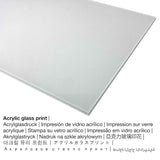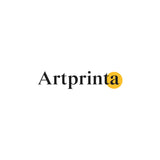Pieter Symonsz Potter, 1638 - Jacob Urging Leah and Rachel to Flee from Laban - fine art print
Tax included. Shipping calculated at checkout.
Product details
The more than 380 years old painting Jacob Urging Leah and Rachel to Flee from Laban was created by Pieter Symonsz Potter. The artpiece measures the size height: 54 cm width: 81,5 cm | height: 21,3 in width: 32,1 in and was painted with the technique oil on panel. The original artwork's inscription is the following: signed and dated: P. Potter. f 1638.. It is in the the Mauritshuis's digital collection, which the Mauritshuis is home to the best artworks of Dutch painting of the seventeenth century. We are pleased to reference that the work of art, which belongs to the public domain is supplied - courtesy of Mauritshuis, The Hague. : Neville Davison Goldsmid, The Hague, until 1875; his widow, Eliza Garey, The Hague and Paris, 1875-1876; Goldsmid sale, Paris, 4-5 May 1876 (Lugt 36515), no. 105 (for 120 francs to Victor Eugène Louis de Stuers for the Dutch State); purchased, 1876; on long-term loan to the Catharijneconvent Museum, Utrecht, since 2012. On top of that, alignment of the digital reproduction is landscape with a ratio of 3 : 2, which means that the length is 50% longer than the width.
Available product materials
The product dropdown menu ofers you the chance to pick the material and sizeaccording to your personal preferences. The following sizes and materials are the options we offer you for individualization:
- Metal (aluminium dibond print): Aluminium Dibond prints are prints on metal with an outstanding depth - for a modern impression and a non-reflective surface. A direct Direct Print on Aluminum Dibond is the ideal start to fine prints made with alu. For our Aluminium Dibond print, we print the work of art right on the aluminium composite white-primed surface.
- Print on acrylic glass: The print on acrylic glass, often referenced as a an art print on plexiglass, changes an artwork into brilliant décor. Furthermore, the acrylic glass print is a great alternative to canvas and aluminidum dibond fine art replicas. With a glossy acrylic glass fine art print contrasts and granular artwork details become exposed with the help of the granular tonal gradation of the picture. The acrylic glass protects your selected fine art print against light and external influences for many more years to come.
- Canvas print: The canvas direct print is a printed cotton canvas stretched on a wooden stretcher. The printed canvas makes a lively and comfortable ambience. Canvas prints are relatively low in weight, meaning that it is quite simple to hang up your Canvas print without the support of any wall-mounts. Hence, a canvas print is suitable for all types of walls.
- The poster print (canvas material): Our poster is a printed canvas paper with a nice surface finish, which resembles the original masterpiece. Please keep in mind, that depending on the size of the canvas poster print we add a white margin between 2-6cm round about the artwork, which facilitates the framing with your custom frame.
Important information: We do in order to describe our products as precisely as possible and to demonstrate them visually. At the same time, some pigments of the print materials and the printing can vary to a certain extent from the representation on your device's monitor. Depending on your screen settings and the quality of the surface, color pigments might not be printed as exactly as the digital version on this website. Since all the fine art prints are processed and printed by hand, there may also be slight deviations in the size and exact position of the motif.
Structured article details
| Product type: | wall art |
| Reproduction method: | reproduction in digital format |
| Manufacturing process: | digital printing (UV direct print) |
| Manufacturing: | Germany |
| Type of stock: | on demand |
| Intended usage: | art reproduction gallery, wall décor |
| Image orientation: | landscape format |
| Aspect ratio: | 3 : 2 (length : width) |
| Image ratio meaning: | the length is 50% longer than the width |
| Available variants: | acrylic glass print (with real glass coating), metal print (aluminium dibond), poster print (canvas paper), canvas print |
| Canvas on stretcher frame (canvas print) variants: | 30x20cm - 12x8", 60x40cm - 24x16", 90x60cm - 35x24", 120x80cm - 47x31", 150x100cm - 59x39" |
| Acrylic glass print (with real glass coating) sizes: | 30x20cm - 12x8", 60x40cm - 24x16", 90x60cm - 35x24", 120x80cm - 47x31", 150x100cm - 59x39" |
| Poster print (canvas paper) variants: | 60x40cm - 24x16", 90x60cm - 35x24", 120x80cm - 47x31" |
| Aluminium print size variants: | 30x20cm - 12x8", 60x40cm - 24x16", 90x60cm - 35x24", 120x80cm - 47x31" |
| Frame: | no frame |
Background information about the artpiece
| Work of art title: | "Jacob Urging Leah and Rachel to Flee from Laban" |
| Classification of the artpiece: | painting |
| Broad category: | classic art |
| Period: | 17th century |
| Artwork year: | 1638 |
| Artwork age: | 380 years |
| Original medium: | oil on panel |
| Dimensions of the original artpiece: | height: 54 cm width: 81,5 cm |
| Original artwork inscription: | signed and dated: P. Potter. f 1638. |
| Museum / location: | Mauritshuis |
| Museum location: | The Hague, South Holland, Netherlands |
| Web URL: | Mauritshuis |
| License: | public domain |
| Courtesy of: | Mauritshuis, The Hague |
| Artwork creditline: | Neville Davison Goldsmid, The Hague, until 1875; his widow, Eliza Garey, The Hague and Paris, 1875-1876; Goldsmid sale, Paris, 4-5 May 1876 (Lugt 36515), no. 105 (for 120 francs to Victor Eugène Louis de Stuers for the Dutch State); purchased, 1876; on long-term loan to the Catharijneconvent Museum, Utrecht, since 2012 |
Artist summary table
| Artist: | Pieter Symonsz Potter |
| Artist gender: | male |
| Jobs: | painter |
| Artist category: | old master |
| Died at the age of: | 51 years |
| Year born: | 1601 |
| Year of death: | 1652 |
© Copyright protection - Artprinta.com (Artprinta)
Additional description as provided by Mauritshuis website (© - Mauritshuis - www.mauritshuis.nl)
Neville Davison Goldsmid, The Hague, until 1875; his widow, Eliza Garey, The Hague and Paris, 1875-1876; Goldsmid sale, Paris, 4-5 May 1876 (Lugt 36515), no. 105 (for 120 francs to Victor Eugène Louis de Stuers for the Dutch State); purchased, 1876; on long-term loan to the Catharijneconvent Museum, Utrecht, since 2012














